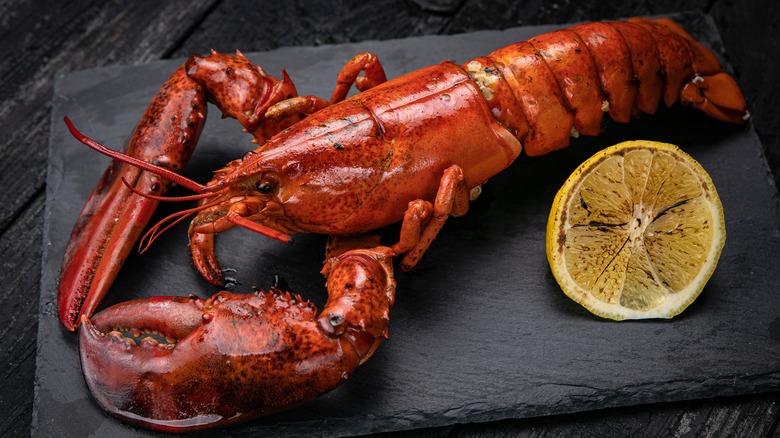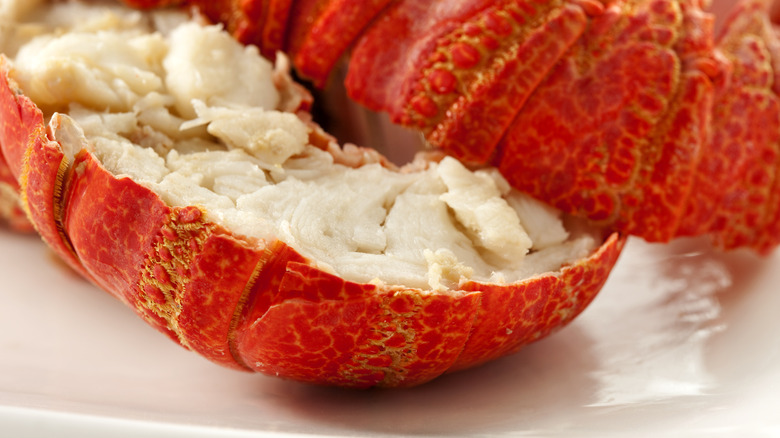Why You Shouldn't Rely On Color To Determine If Lobster Is Done
Having lobster for dinner is one of those things many of us reserve for special occasions, and for good reason. Lobsters, despite their relative availability, do not command the cheapest of prices. Therefore, purchasing a few brings with it the pressure of making sure that you cook them properly since no one wants to ruin an ingredient they spent a lot of money on. And, while it may be tempting to think of them as fully cooked when the shells turn bright red, you shouldn't rely on the color to determine if the lobster is done.
Lobsters have a pigment called astaxanthin, which is stored in a tightly packed membrane within the shell. When the lobsters are alive, their shells take on a muddy color because the pigment is trapped. But when cooked, the heat will separate the pigment from the membrane. As astaxanthin absorbs blue light, the loose pigments in the shell will become red. It does nothing to indicate whether a lobster is truly done cooking and ready to eat, however.
So, if color doesn't indicate doneness, what does? Determining if a lobster is cooked has everything to do with the method used and the cooking time dictated by it. And whether you're steaming or boiling your lobster, it pays to do a quick check of the meat in order to really tell if the lobster is finished cooking.
The real test comes to the meat inside
The average sized lobster is between 1 ¼ to 1 ½ pounds. Depending on whether you are boiling or steaming, the lobster will take anywhere from six to 12 minutes to cook, although larger ones may need more time. While boiling may be a more traditional method, steaming is recommended for home cooking because it is fast and requires very minimal input for maximum flavor. All you need is a large stock pot and a tray that keeps the lobsters off the bottom of the pot so that the steam can envelop them completely.
Due to the high heat created by the steam, the shells will turn red almost instantly. Obviously, they are not going to be finished the second they touch the steam, so allow them their entire cooking time before you go to check them. Remember to keep the pot cover on during this time so that no steam escapes from the pot.
To check the lobster for doneness, remove one from the steam pot and make an incision where the tail meets the body with a sharp knife. If the meat has color and is opaque all the way through, the lobster is cooked. If it is still translucent, return it to the pot for another few minutes and check again. Once the meat has turned white or reached 140 degrees Fahrenheit, remove the lobsters immediately and allow them to cool — doing this will ensure that you don't end up with rubbery, overcooked lobsters.

